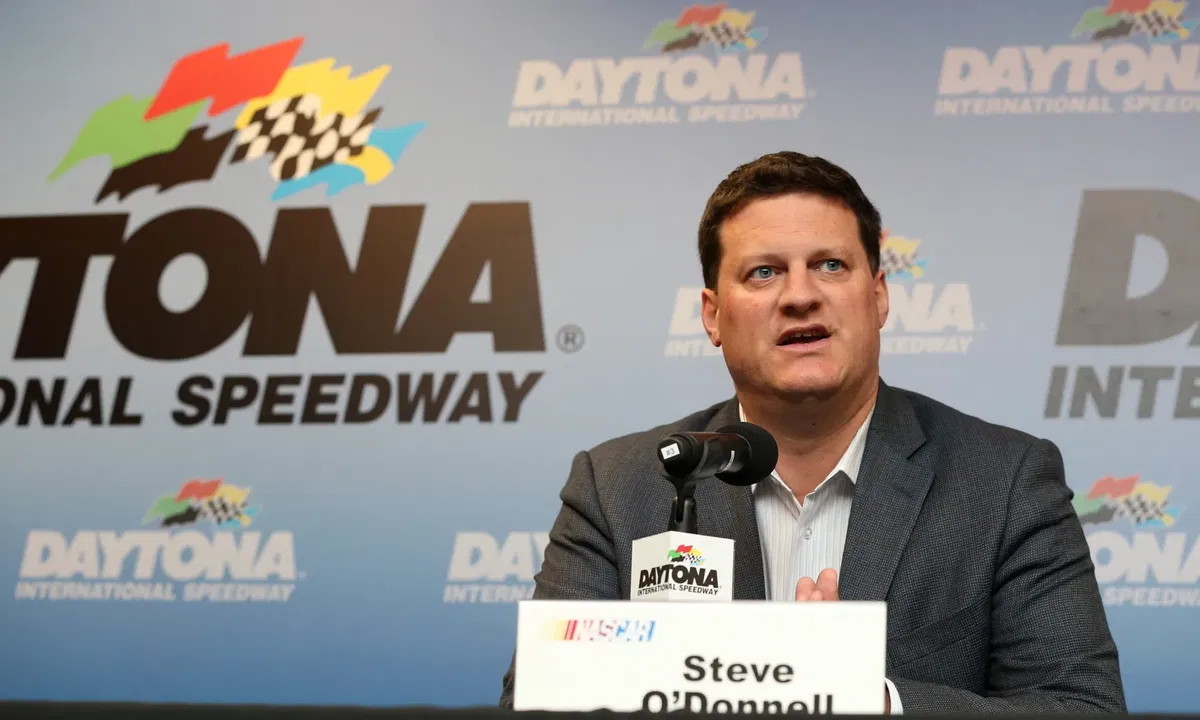

“It looks like NASCAR is going to change the rules next year to where we’re like 740-750.” Ever since Brad Keselowski gave away this horsepower secret, fans haven’t been able to keep calm. NASCAR President Steve O’Donnell came on Dale Jr.’s podcast and cleared everything up, clarifying that anything more than 750 would have been a significant cost to handle, amid Dodge and other potential OEMs entering in.
Watch What’s Trending Now!
So that’s the ‘what’. But what about the ‘when’? O’Donnell finally revealed exactly when NASCAR will start testing the new 750-hp setup.
ADVERTISEMENT
Testing is just around the corner
Dale Jr. didn’t shy away from asking O’Donnell, “What are some of the aero things that y’all talk about? Do you get into those conversations?” He responded, “I’ll screw it up. So I let John Probst and the team, really working with the race teams. They’ve got the smartest guys in the world working on those cars.”
It’s clear from his response that he leaves the technical stuff in the hands of the best. John Probst, NASCAR’s EVP and Chief Racing Development Officer, is the one who gets his hands dirty with the teams and puts his mechanical expertise to work.
O’Donnell continued, “I think what you’ll see us do is, we got the drivers, with the counsel from Christopher Bell and others, Joey Logano, talking about, ‘Hey! Let’s try some of these things.’ Working with 3 of the OEM manufacturers and crew chiefs or Heads of Competition. Putting some ideas together, going and trying it at North Wilkesboro and see what happens.”
ADVERTISEMENT
One thing’s good to see how NASCAR practices an all-hands approach, where they actively involve drivers working alongside the OEM manufacturers and crew chiefs.
And why North Wilkesboro? Testing there provides a controlled environment to evaluate these precise adjustments, given the track’s recent repaving and the rich history. But Junior didn’t waste any time and immediately asked, “When does that happen?”
ADVERTISEMENT
“That’ll be, I think end of the season, early December. So the goal would be, if we find some things, let’s go. If we don’t, we’ve at least started the process to keep it going.”
The fact that they’re choosing to do this post-season at least brings some relief that the current season won’t be disturbed or undervalued for what it is. The postseason will also give them a stress-free and peaceful pace to carefully analyze everything they want to. And as O’Donnell says, even if those tests in December don’t give good news, something’s still better than nothing.
ADVERTISEMENT
Brian Keselowski takes a jab with his horsepower perspective
Brian Keselowski is one of those who isn’t happy with the upgrade news. He finds the flaw in the foundation. “My ARCA motor in 2007 made 800 hp to the rear wheels, around 850 hp to the flywheel,” he recalled, emphasizing durability over long races. But what’s head-scratching? “Cost was half the current spec engine.”
Today, modern restrictions raise budgets and limit innovation compared to the open-rule motors of the past. Keselowski suggested that NASCAR’s step to 750 HP misses lessons from when higher power didn’t demand premium costs.
Steve O’Donnell had his own defense as to why they couldn’t upgrade beyond 750. “Our job is to think about the out-years. We’re looking at Dodge coming into the sport, and potentially other OEMs like Honda, along with our current partners. The existing manufacturers—Toyota, Chevrolet, and Ford—like the current engine and don’t want to make a change unless we’re going to stick with it,” he explained.
ADVERTISEMENT
Aiming beyond 750 HP would require $40–50 million in modifications, and they didn’t want to jump to a higher number only to modify it again within a short period. Even Probst said, “Once you go above that, you start crossing into very short-mileage engines, because you’re actually pushing them harder and harder. A lot of inefficiencies come in real quick.”
Ultimately, only the testing in December at North Wilkesboro will show whether NASCAR’s 750-horsepower plan would really provide that stability and long-term benefits that O’Donnell and Probst talk about, or if Brian Keselowski’s point about getting more power without huge costs is worth looking into.
ADVERTISEMENT
ADVERTISEMENT
ADVERTISEMENT

